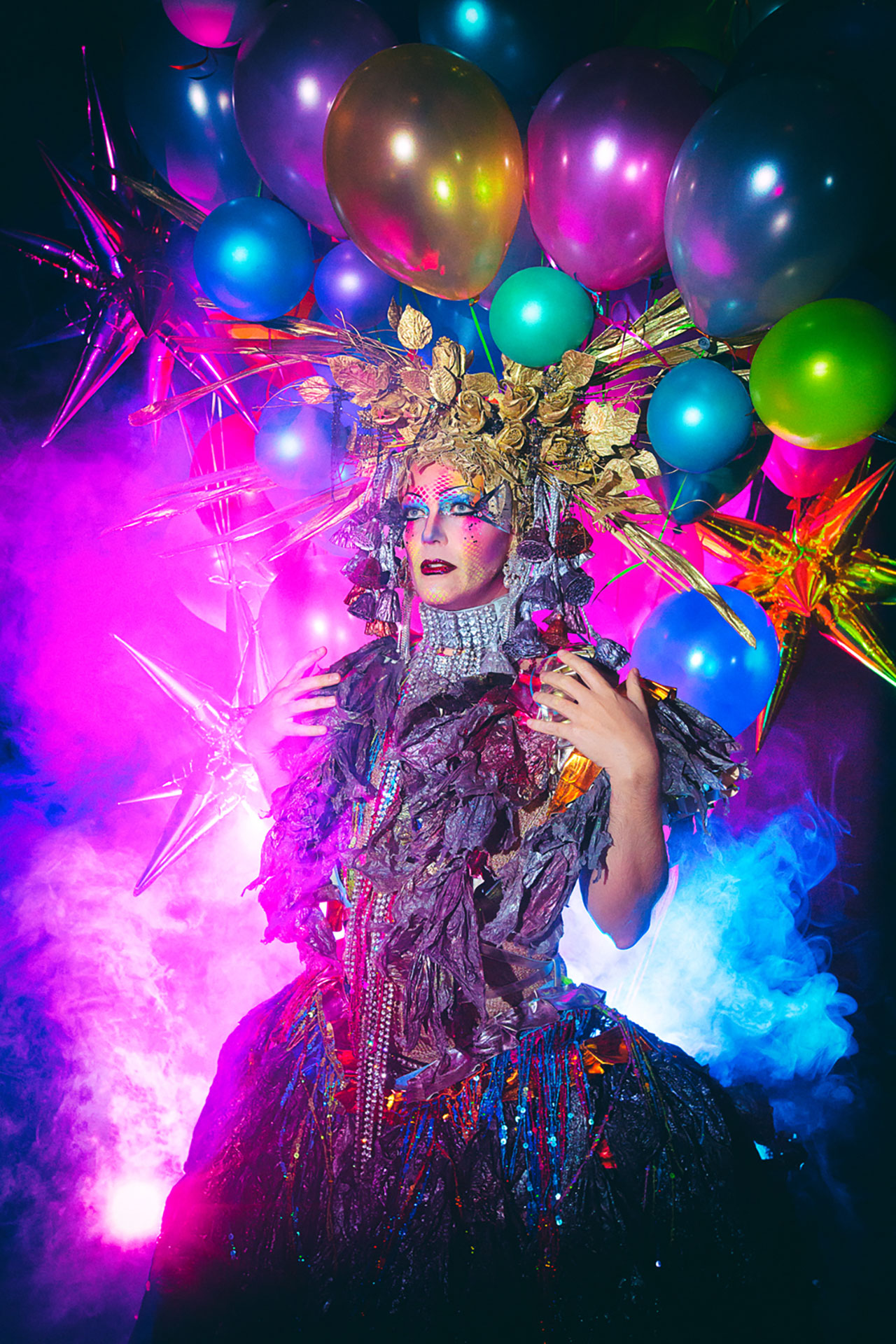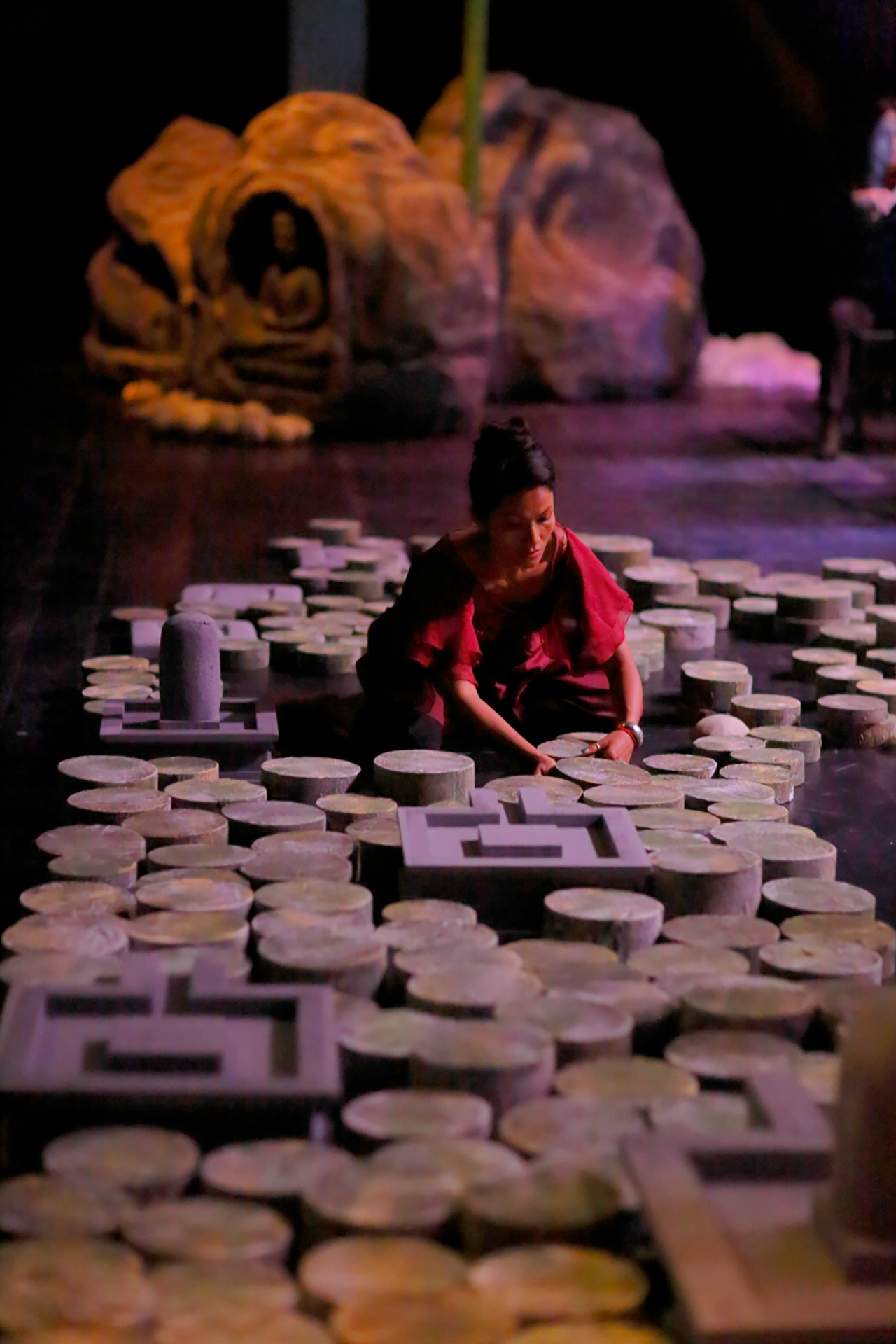News feed

The task of surveying a city – how it works, what is possible, how its constituents engage – would for many be an unenviable one, especially when that city is Melbourne. For Jonathan Holloway, the Artistic Director of Melbourne Festival, the responsibility of programming a festival for one of the world’s great cultural capitals meant beginning with a single question: “What is the most important set of stories we can tell, and connections we can make”?
“In a world that feels disrupted and troubled, what is it in a festival that can remind us all how amazing life can be,” questions Holloway. “How wonderful the human race is, and what we can all achieve when we work together.”
Holloway, who yesterday celebrated the inauguration of his second Melbourne Festival program, found that asking such questions lead him to what might be considered an even more daunting place – one where anything was possible. “We went to unusual places together, we had extraordinary experiences, we took some risks, and I realised that anything is possible with the audiences in Melbourne. Truth be told, [last year] was thrilling! This year’s Festival starts from a very different place.”
Holding court most visibly over that place is the Festival’s centrepiece, A 24-Decade History of Popular Music, a magnum opus conceived and performed by the New York-based performance artist Taylor Mac. A show that’s described as 240 years in the making and 24 hours in the telling, Mac’s work is a veritable American songbook that radiates with life, requires a great deal of endurance and is as close to pure, unfettered creative expression as possible. In its first iteration, Mac staged performances across the span of an entire day, taking breaks only momentarily to refuel, rehydrate and relieve themselves between songs. Writing for the New York Times, one critic called it “one of the great experiences of my life”; Holloway describes it as “one of the most thrilling pieces of performance I’ve experienced.”

“People who’ve seen it describe it as being like a 24-hour epic party, or like the best rock gig you ever went to, or like a series of sensational immersive theatrical experiences. Whatever it is, it is constantly surprisingly and exciting, has a 30 piece band on stage for the whole time, another 120 performers join for sections, and it’s like a cross between a David Bowie concert and that really great party that you once went to.”
Holloway says he first met Mac 10 years ago, and began to talk about the production four years later; in the years since, he has seen nine of the 24 hours in various settings. In its incarnation at Melbourne Festival, Mac’s performance will be staged across four six-hour epics at The Forumbeginning in 1776 with the American Revolution as told from the perspective of the Yankee Doodle Dandy; the early Woman’s Liberation movement; an epic battle between drinking songs; early Temperance songs; a dream sequence where audiences are blindfolded and the heteronormative narrative as colonization is interrogated. The final chapter, beginning in 1956 and culminating in a final hour Mac spends alone on stage (a fairly apt allegory for 2016), canvasses Bayard Rustin’s March on Washington before descending into a queer riot; tackling sexual deviance as revolution, radical lesbians and celebrating a community building itself while under siege. It sounds as though it will likely go down as being amongst the most edifying and incredible performances Melbourne – a city that’s no stranger to great feats of artistic endurance (think back on The Ring Cycle performances The Wheeler Centre staged in 2013) – has ever seen.
“Add to that, you’ll be part of an audience of 800 beautiful people, who will gather in the Forum for four nights to watch, listen, dance and enjoy,” adds Holloway. “You’ll feed each other grapes and beer, re-stage the American Civil War with 5000 ping-pong balls, sleep on each other’s laps, and experience the best music of your lives.
“Basically, if you can’t meet the love of your year and get laid after that, we just can’t help you!”
Being an artist, says Holloway, requires “vision, skill, inspiration, resilience, and the charm to get people to pay attention to you in the first place.” If charm is amongst those most necessary of attributes, the performers he has amassed as part of his directorial vision have such a quality in spades. The response to his second curatorial offering, he says, has been thrilling. “Quite a few shows have sold out since we launched, including some unusual ones,” says Holloway. That includes Please, Continue (Hamlet), an experiential piece of courtroom theatre from the Dutch and Spanish provocateurs Yan Duyvendak and Roger Bernat, which places the trial of Hamlet for the murder of Polonius at its centre but charges actual barristers, a legitimate judge, court psychologists and QCs with its resolution. No two performances of the work will be the same.
Then there is Tree Of Codes – a performance which has sold out all around the world – and which Holloway says is about to sell out here as well. Billed as an extraordinary dance event,Tree of Codes is a cross-disciplinary project that was born from the contemporary novelist Jonathan Safran Foer’s book-come-sculpture of the same name. The finished work is a collaboration between the studio of multi award winning British director and choreographer Wayne McGregor, the renowned Danish visual artist Olafur Eliasson, the genre-defying musician Jamie XX and the Paris Opera Ballet. Six performances of the piece will take place in the State Theatre, conflating the extraordinary practices of contemporary ballet, visual art and electronic music forged by creative giants working at the vanguard of their respective fields.

According to Holloway, Melbourne Festival has fewer resources than many of the other international festivals in Australia, and while it exists in a city that is perhaps known for the density of its cultural calendar, the challenge then arises to make the festival stand out. “Fortunately,” says Holloway, “it is one of the world’s great festivals in one of the world’s cultural capitals, audiences are committed, daring and imaginative, and artists that I speak to all around the world absolutely love the city.” They include Yang Liping, China’s ‘queen of contemporary dance’ and a former co-host of the local iteration of So You Think You Can Dance. In Under Siege, Liping has collaborated with costume designer Tim Yip (Crouching Tiger, Hidden Dragon) to create a large-scale dance maelstrom with an historical underpinning and a filmic quality on a scale that Holloway says is unlike anything else you’ll see (the performance takes place under the spectacle of thousands of suspended steel scissor blades). Another must-see performance is A Requiem for Cambodia: Bangsokol, a world premiere spanning song, film, dance and voice. It’s also the first orchestral performance that address the intergenerational traumas that occurred in Cambodia under the reign of Phnom Penh and the Khmer Rouge, in whose hands over two million Cambodians lost their lives. In another Australian premiere, the Danish choreographer and dancer Mette Ingvartsen’s 7 Pleasures will investigate the seven roles of pleasure through a dozen-strong company of dancers who, through a complete absence of costume and a focus on tactility, explores how perceptions of nudity and sexuality have changed with time. Holloway describes this, as with all other works mentioned above, as unmissable – “a sensual and pulsating work of dance” from an international artist (one of many) at the top of their game.
The festival began last night, however, with a local focus conveyed through the words of the Indigenous people of the Kulin nation. The event will finish on October 22 with an event featuring Melbourne’s multicultural community. Between those points, Holloway is confident that the Festival has come as close to covering every element of Melbourne’s vibrant society as is possible. The rest is over to you.
“I hope that you, our audiences, have the time of your lives, experience something you’ve never experienced before,” says Holloway. “I hope we all remember why we were the people who put a man on the moon, built the pyramids, conquered the sky and the sea, and who created the most exciting music, theatre, dance, circus, visual arts, that the world has ever seen.”
MELBOURNE FESTIVAL IS ON NOW AND TAKES PLACE AT VARIOUS VENUES THROUGHOUT THE CITY OF MELBOURNE UNTIL OCTOBER 22. YOU CAN VIEW THE PROGRAM IN FULL AND FIND OUT MORE INFORMATION HERE.
Tile image: Ding Yi Jie/Courtesy of Melbourne Festival
Cover image: Xiao Quan/Courtesy of Melbourne Festival









